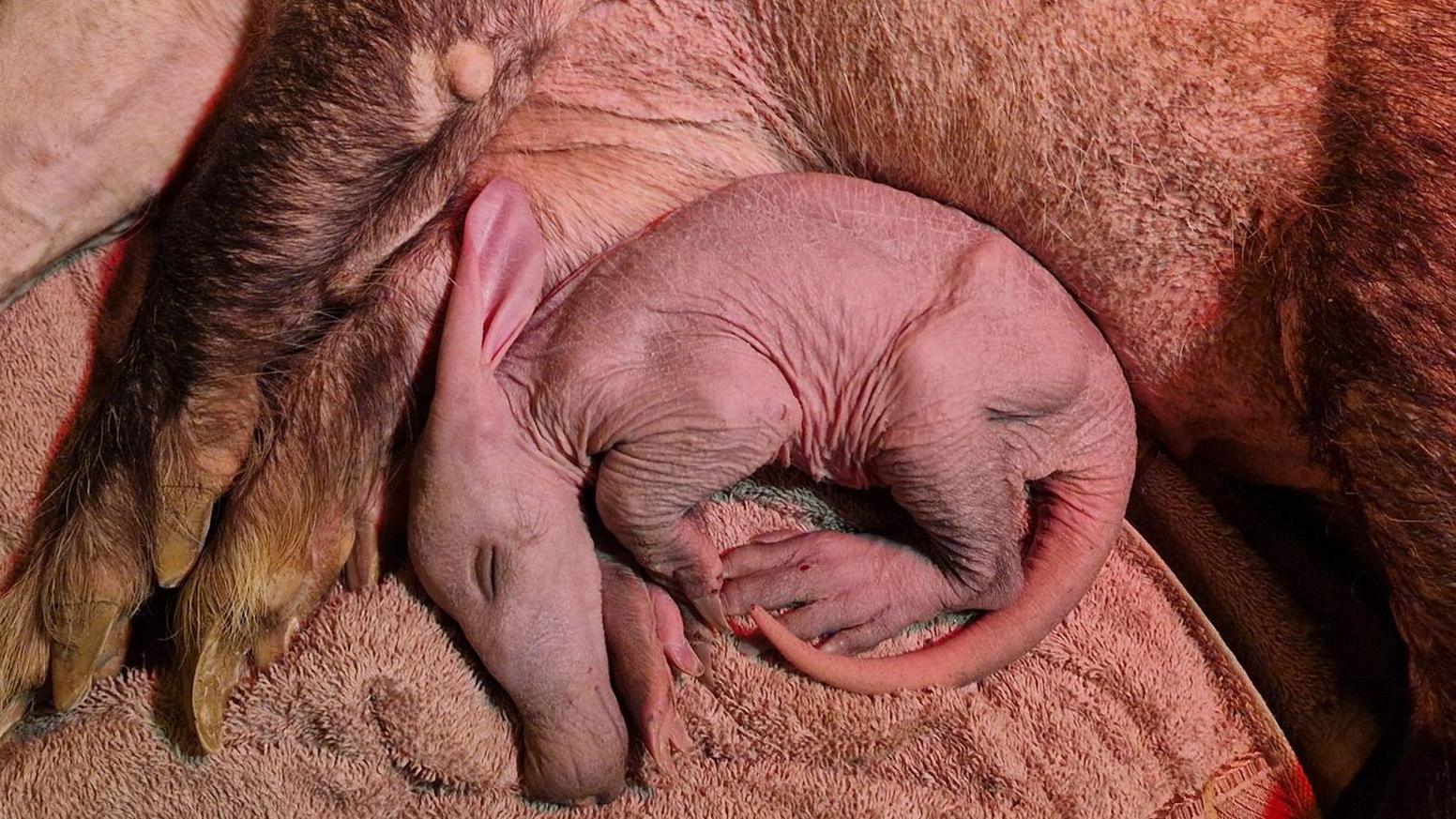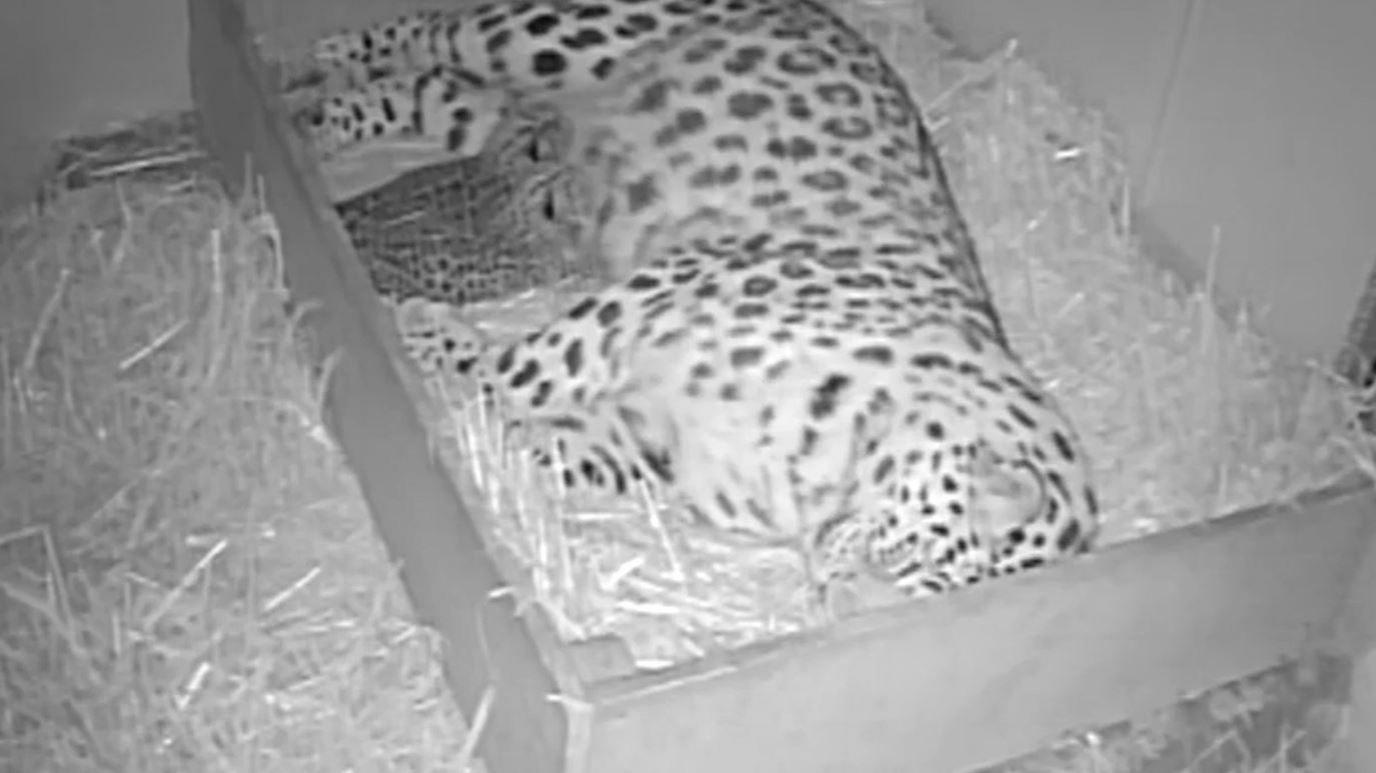Zoo 'delighted' after aardvark birth

The Animal Care Team said they had kept a close eye on mum and her new arrival and OQ had proven to be an "excellent and caring parent"
- Published
A zoo says it is "delighted" to have grown its aardvark family after the birth of its newest arrival.
Colchester Zoo welcomed the baby on 23 November, which is residents OQ and Koos' first birth together, but OQ's 12th offspring.
Koos arrived in October 2023 from Chester Zoo as part of a breeding recommendation, in the hope that he would successfully raise young.
A spokesperson from Colchester Zoo said: "[We] are delighted to see that Koos has settled in really well and the pair have managed to welcome another addition to the group, helping towards the conservation of this species."
Aardvark fact file

These animals are easily recognisable by their long snout and pointy ears
Aardvarks are found in sub-Saharan Africa, all the way down to South Africa
The mammal is currently listed as "least concern" on the IUCN Red List, external of threatened species
The name means "earth pig" in Afrikaans and their short, powerful limbs with shovel-shaped claws make them excellent diggers
In the wild their burrows can be up to 13 metres long
An aardvark's tongue is about 30cm long and is used to catch termites and ants and they can eat up to 50,000 insects each night
Aardvarks are nocturnal which is why they are usually asleep in their burrows, or at the zoo, during the day
Their average lifespan while in captivity is 23 years
Get in touch
Do you have a story suggestion for Essex?
Follow Essex news on BBC Sounds, Facebook, external, Instagram, external and X, external.
Related topics
More like this story
- Published2 August 2024

- Published2 December 2024

- Published9 January 2020
